Sore Muscles? Do These 7 Stretches (Plus All the Science-Backed Benefits to Motivate You)
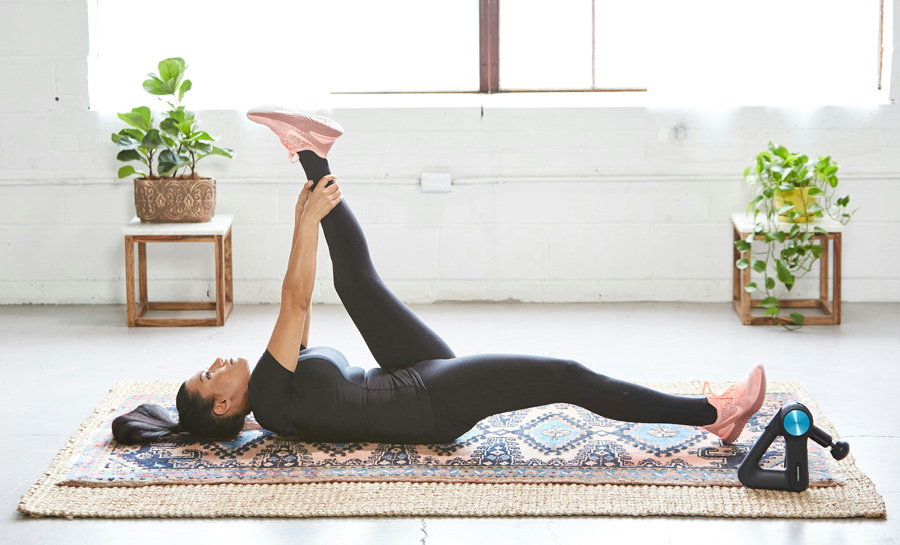
Looking for sore muscle relief? Do you often get sore muscles after working out? Interested in learning about muscle soreness recovery? Find all the answers and more in this article!
While soreness is an uncomfortable part of working out, it’s typical.
Rest, warm baths and movement can help alleviate some of the discomfort. But incorporating a regular stretching routine into your lifestyle can offer many benefits for sore muscle relief – and so much more.
For example, did you know that stretching actually releases endorphins?! (More on that below.)
Read on to learn what causes sore muscles post-workout, the answer to the popular question of whether or not to stretch sore muscles, and the main benefits of stretching. We even cover tips to aid in sore muscle relief and simple stretches you can try anytime you’re feeling sore.
Ready to Get Your Stretch On? Take the Full Body Flexibility Program
This popular all-levels YA Classes program is perfect for anyone wanting to get flexible or deepen their flexibility. Regardless of how flexible you are, this program is a safe and effective way to stretch and gain full-body flexibility.
Ok, let’s get into it!
What Causes Sore Muscles After a Workout?
Muscle soreness after a workout — often known as delayed onset muscle soreness (DOMS) — is a natural outcome of certain types of physical activity. This discomfort typically peaks between 24 and 72 hours after exercise, presenting as pain, stiffness, aches and tenderness.
The primary cause of this sensation is very small damage to muscle fibers that happens during intense or new exercise. These rips cause an inflammatory response where the body sends white blood cells to repair the muscle and clear debris, leading to soreness and possible swelling.
Eccentric muscle contractions — where muscles lengthen like a stretched rubber band, such as during the lowering phase of a lift — are a common sign of DOMS due to the increased muscle damage they induce.
While many people misunderstand lactic acid buildup, it does contribute to the muscles’ acidic environment during exercise. Individual variability — including factors like genetics, fitness level, hydration and nutrition — plays a role in how people experience and recover from muscle soreness.
Should You Stretch Sore Muscles?
Stretching sore muscles can provide some relief, but you should do so considering your specific circumstances, particularly if you’re new to it. Muscles often ache due to miniscule damage and swelling resulting from intense or unfamiliar physical activity.
Stretching can be beneficial because it improves flexibility, increases blood flow and alleviates tension, potentially easing some soreness. However, it’s essential to be mindful of the kind of stretching you do.
Dynamic stretching — which involves controlled movements that gradually increase the range of motion — may aid in sore muscle relief more than static stretching, where you hold a position. Dynamic stretching can help improve circulation and promote recovery without putting excessive strain on your already-sensitive muscles.
It’s best to avoid aggressive or ballistic stretching — especially when muscles are extremely sore, as this can lead to further damage or exacerbate existing inflammation. Proper, gentle stretching can contribute to overall muscle recovery with strategies like rest and hydration.
Individual preferences and responses to stretching can vary, so listening to your body is essential. If doing so increases pain or discomfort, focus on other doctor-recommended recovery strategies like proper nutrition, which can contribute to overall muscle recovery.
Recognizing Muscle Soreness vs. Injury
Differentiating between muscle soreness and an injury is vital for your well-being and recovery, and can prevent you from worsening damage with more exercise. Tenderness usually presents as a general, dull discomfort in the affected area. It tends to be temporary, and you can manage it with rest, hydration and gentle stretching.
On the other hand, an injury may involve localized pain, swelling and a sharp, acute sensation that persists beyond typical muscle aches. Soreness is often a bigger problem if it lasts longer than five days.
Stretching can be beneficial because it improves flexibility, increases blood flow and alleviates tension, potentially easing some soreness.
If the muscle is sore at rest, or if you notice intense, lasting discomfort or other signs of injury like bruising, swelling, or limited range of motion, you’ve likely hurt yourself.
It’s vital to seek a professional medical evaluation or these symptoms. Reach out to a health care provider or a qualified sports medicine physician to assess the situation accurately and determine the best course of action for your care regimen.
How Does Stretching Benefit Muscle Soreness?
Most people experience muscle soreness, whether it’s due to an intense workout, prolonged sitting or everyday stressors.
Reaching for pain relievers might be your first instinct, but incorporating stretching into your schedule can offer a natural and effective solution.
Sore muscles after workout? These benefits will motivate you to stretch.
1. Increases Blood Flow
Improved blood circulation is crucial for delivering oxygen and essential nutrients to sore muscles, helping repair tissue damage and reducing inflammation.
This increased blood flow also helps improve metabolic waste byproducts to enhance overall recovery.
2. Improves Flexibility and Range of Motion
Better flexibility means a greater range of motion in the joints, alleviating stiffness and making everyday movement more comfortable for stiff muscles. It also helps prevent future injuries by allowing tissues to adapt to various stresses.
If you have a wider range of motion, it’s much less likely you’ll injure yourself by overstretching a muscle.
3. Promotes Muscle Relaxation
Stretching activates the Golgi tendon organ, which inhibits contraction. This reflex encourages muscle relaxation, reducing tightness and promoting relief from soreness.
Relaxation is the key to easing sore muscles after working out. The more you can physically relax, the more effective the stretching benefits will be.
4. Speeds Up the Recovery Process
A good stretch supports the lymphatic system, which removes waste products and reduces swelling. This process accelerates your recovery from aches and pains, particularly after intense exercise.
5. Reduces the Risk of Imbalances
Getting in stretches regularly contributes to balance by addressing agonist and antagonist muscles. This prevents overuse or underuse of specific muscle groups, reducing the likelihood of tenderness resulting from imbalances.
Sore muscles may also contribute to poor posture. Stretching addresses tightness that can pull the body out of alignment, promoting better alignment habits and lowering imbalance-associated discomfort.
6. Relieves Muscle Stiffness
Sore muscles often feel stiff, hindering movement. Stretching out your muscle fibers helps reduce stiffness and improve the affected area’s mobility. Hence why stretching is key for combatting sore muscles after workouts.
7. Releases Endorphins
Stretching — especially with deep breathing and relaxation techniques — stimulates the release of endorphins.
As muscles lengthen and tension decreases during a stretch, sensory receptors signal the brain to release these mood-boosting neurotransmitters. These natural feel-good hormones can alleviate stress and pain perception.
8. Prevents Further Injuries
By maintaining optimal muscle performance and flexibility, stretching contributes to injury prevention. Soreness from strains or overuse is less likely when you condition your muscles to handle various stresses effectively.
9. Enhances Joint Health
Stretching supports joint health by promoting proper alignment and reducing the stress on these sensitive points. It’s particularly beneficial for tender tissue surrounding joints, as it helps maintain mobility and function.
11 Tried and True Tips for Sore Muscle Relief
Alongside stretching, you can take some additional measures to ease discomfort. Whether you’ve pushed yourself during a workout or simply struggle with muscle tightness, these practical tips can help alleviate soreness and get you back on track.
1. Allow Your Body to Rest and Recover
Allow your muscles time to rest and recover by avoiding intense physical activity targeting the aching area. Aim for around 48 to 72 hours of rest for the affected muscles to recover fully. Incorporate active recovery techniques like light walking or swimming to promote circulation without causing additional strain.
Make sure you get adequate sleep, as rest plays a vital role in the body’s recovery process. Aim for at least seven hours of good-quality sleep each night.
2. Make Sure You Hydrate
Drink plenty of water to stay hydrated and flush out metabolic byproducts contributing to soreness. At least eight cups per day is a good goal, plus extra if you’ve been active or it’s hot out. Believe it or not, the more hydrated you are, the easier it is for your body – and particularly those sore muscles – to recover after working out.
Read: 7 Surprising Signs of Dehydration and 5 Tips to Prevent It
3. Optimize Your Nutrition
A well-balanced diet rich in proteins, vitamins, and minerals provides the necessary nutrients for muscle repair and other vital bodily functions. Include lean proteins like fish, eggs and legumes in your meals, aiming for at least .36 grams of protein per pound of body weight. Add foods like fruits, vegetables and omega-3 fatty acids to reduce inflammation.
Learn more about protein and how to get enough in your daily diet. Read: 10 Signs You’re Not Getting Enough Protein
4. Try Hot and Cold Therapy
Hot and cold packs can help with sore muscles. Ice can reduce swelling, while heat can relax sore muscles.
Apply heat packs, warm baths, or hot showers to increase blood flow to sore muscles and promote relaxation. You can also use ice packs for 10-15 minutes at a time to reduce swelling and numb pain, especially in the first 48 hours after the soreness starts.
5. Incorporate Gentle Massage
Gentle massages can help improve circulation and reduce tension. Consider using a foam roller to apply pressure to sore muscles gently, promoting blood flow and reducing tightness.
Learn More About Foam Rolling and How to Do It Here
For a more targeted and thorough approach, try making an appointment with a professional massage therapist — they have the skills to promote a more comfortable recovery.
7 Lesser Known Benefits of Massage Therapy
6. Use Compression
Use compression sleeves or wraps to apply even pressure to the affected area. Compression can reduce swelling, enhance circulation and relieve aches. Ensure the garments aren’t too tight, which can impede blood flow.
7. Elevate Your Legs
Lift your legs or the affected limb above heart level to drain excess fluid, reduce swelling and promote better blood circulation. This position helps flush out metabolic byproducts like lactic acid from your fatigued muscles. Keep your legs elevated for 15–20 minutes for maximum benefits, combining this with rest for optimal results.
8. Do Some Light Exercise
Low-impact movements like cycling or swimming can promote blood flow without causing further damage. Light aerobic exercise has many benefits, but listen to your body if exercise makes your pain worse — take a rest day instead.
9. Apply Topical Analgesics
Over-the-counter creams or patches containing ingredients like menthol or camphor can provide localized relief. Follow product instructions and be cautious of any skin sensitivities. If you notice any redness or irritation, it’s best to stop using the item and try another method.
We love DoTerra’s Deep Blue Rub!
10. Prioritize Proper Warm-Up and Cool Down
Don’t underestimate making time for a sufficient warm-up and cool down. Get ready for your intense workouts with 5–10 minutes of light aerobic exercise. Cool down with gentle stretching to prevent stiffness and promote flexibility.
11. Supplement With Magnesium
Magnesium plays a significant role in your muscle’s function and their overall health, making it a potential ally in alleviating soreness. This nutrient activates the enzymes responsible for energy production and muscle contraction. Research suggests it may help relax muscle fibers and reduce cramps.
Additionally, magnesium has anti-inflammatory properties that can relieve muscle inflammation — a common factor in post-exercise soreness.
Try including some of these magnesium-rich foods in your diet:
- Nuts
Avocado
Spinach
Edamame
Potatoes
Tofu
Brown rice
Salmon
Quinoa
Dark chocolate
While you can get magnesium through food, you could benefit from supplements. Talk to your doctor to see if adding one to your regimen will support your body.
Magnesium citrate is recommended for muscle recovery. We recommend this magnesium citrate supplement on Amazon
7 Best Stretches for Sore Muscles
To address stiff muscles effectively, you need to make targeted stretches a part of your routine. Here are some of the best stretches for sore muscles.
BONUS: Jump Right In With This All-Levels Daily Stretch Class
Join body mobility expert Alba Avella as she guides you through a short, sweet, and effective stretch class meant to be a part of your daily routine. Great for all levels, this YA Classes class will help you gently stretch.
1. Neck and Shoulder Rolls
If you are sore after working out in your shoulders, these neck and shoulder rolls will bring sweet relief.
- Gently tilt your head to one side, bringing your ear toward your shoulder. Hold and repeat on the other side
- Roll your shoulders backward in a circular motion for 15–60 seconds, then switch to forward rolls
2. Cat-Cow Stretch
If your back muscles are tense or sore post-workout, the classic cat-cow stretch will bring sore muscle relief!
- Start on your hands and knees in a tabletop position
- Inhale as you arch your back, lifting your head and tailbone (cow position)
- Exhale as you round your back, tucking your chin to your chest (cat position)
- Repeat for 1–2 minutes
3. Wrist Flexor Stretch
Don’t forget your precious wrist joints in your post-workout stretch!
- Extend one arm in front of you, palm facing down
- Use your opposite hand to press down on your fingers gently
- Hold and then switch to the other hand
4. Child’s Pose
A gentle restorative stretch, Child’s Pose can ease your sore muscles after any workout.
- Kneel with your toes together and knees as wide as your hips
Sit on your heels and stretch your arms in front of you
5. Hamstring Stretch
Arguably one of the most common areas of muscle soreness, this hamstring stretch is perfect for your muscle soreness recovery.
- Sit down on the floor with your toes together and knees hip-width apart
- Hinge your hips and reach toward your toes
6. Calf Stretch
If you just did leg day or finished a run, your calves are probably begging for a stretch. Don’t forget these sore muscles after a workout!
- Stand facing a wall with your hands on it
- Step one foot back, keep it straight and press your heel into the floor. Hold and then switch legs
After Active Is the Perfect Class to Stretch With After Your Workout
This class was made for sore muscles after a workout and is the perfect cool-down after any workout. Press play on After Active and be sure to bookmark it as your go-to post-workout stretch class!
I Have Sore Muscles After Workouts: Should I Continue Working Out When I’m Sore?
Deciding whether to continue working out when you’re sore depends on how severe your discomfort is. In many cases, DOMS is a natural part of adapting to exercise and you can simply work through it with light to moderate activity.
The more your muscles get used to certain movements, the less likely you are to suffer from post-workout aches and pains.
However, if the soreness is intense or you’re showing signs of an injury, allowing your muscles adequate time to heal is crucial. Pushing through severe soreness may increase the risk of overtraining, compromise form and lead to injuries.
Remember to listen to your body, prioritize rest, and consider adjusting your workout intensity or focusing on different muscle groups until the soreness subsides.
Use These Tips for Sore Muscle Relief
Making stretching part of your daily routine can be a powerful and natural remedy for sore muscle relief. The benefits extend beyond immediate comfort, including improved flexibility, enhanced blood circulation, stress reduction and better posture.
By making stretching a consistent part of your wellness strategy, you can contribute to overall muscle health and reduce the amount of sore muscles after working out.


This Month's Letter
From the Editor
Monthly motivation and food for
thought from our founder.


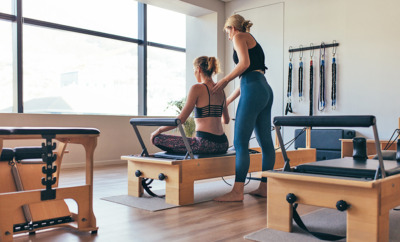





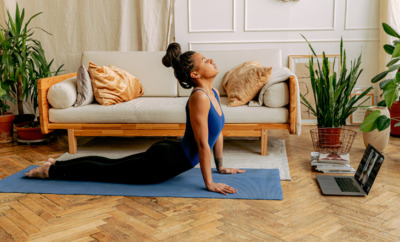



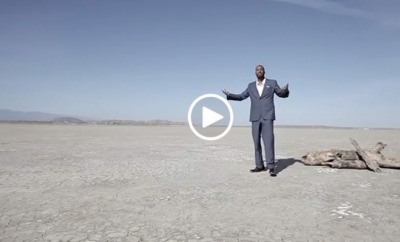












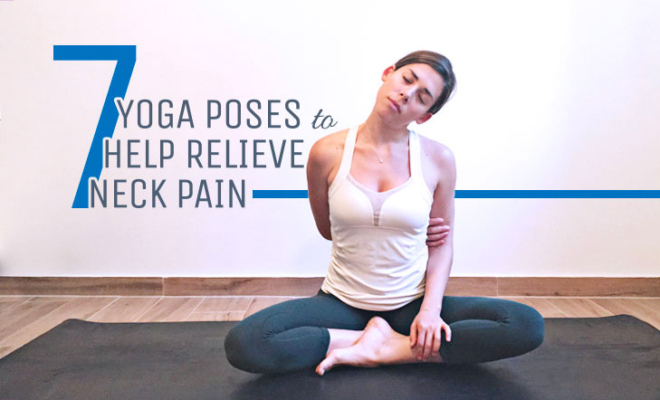



Comments